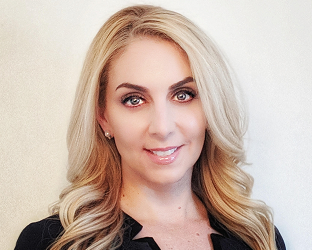Markets are mulling over what the combination of a hotter January CPI print than expected alongside a jump in retail sales in January could mean for the Fed rate hiking path looking ahead. With inflation potentially stickier than previously anticipated, it could mean that interest rates could rise higher for longer, something that markets currently aren’t pricing for, according to Nancy Davis, founder of Quadratic Capital Management.

Nancy Davis, founder of Quadratic Capital Management, portfolio manager of IVOL
“Given the pace at which inflation is moving, markets should be pricing-in higher inflation expectations. The 5y-5y CPI inflation breakeven stands at about 2.1%, which means that investors are pricing-in little or no risk that the Fed will have trouble containing inflation in the medium term,” said Davis, who is also the portfolio manager of the Quadratic Interest Rate Volatility and Inflation Hedge ETF (IVOL), in a communication to VettaFi.
January’s CPI print revealed that while inflation is continuing to fall, it is doing so at a slower rate; month-over-month CPI was up 0.5%, the largest gain since October. The gains were driven largely by food, energy, and shelter and included new methodology that the Bureau of Labor Statistics is using to calculate housing that gives it greater weight in CPI prints. It’s a change that could mean that the CPI print remains higher than expected for longer this year, according to Davis.
With markets currently priced for disinflation and a return to close to 2% inflation by year’s end, changes to the narrative could mean further volatility and dislocation and underscore the need for inflation-linked assets.
“The biggest risk for investors is if the Federal Reserve fails to control inflation, and its rate hikes push the economy into a recession. This combination of factors is akin to a stagflationary environment, consisting of a weak economy and elevated inflation, which would be a really difficult environment for investors,” explained Davis.
Investing for Sticky Inflation With IVOL
“We believe inflation-linked assets should be a standard component of an investment portfolio, as these assets can provide diversification that is uncorrelated to the movements of traditional stocks and bonds,” Davis said.
The Quadratic Interest Rate Volatility and Inflation Hedge ETF (IVOL) from KFAFunds, a KraneShares company, is designed to have a twofold hedge against an increase in fixed income volatility and/or an increase in inflation.
The fund also seeks to maximize yield curve increases, either brought about by long-term interest rates increasing or short-term interest rates falling; both are tied to big equity market declines.
IVOL was the first ETF of its kind in active and passive options and offers access to the OTC fixed income options market, the mechanism it uses for long interest rate volatility. The fund invests in a mix of U.S. Treasury Inflation-Protected Securities (TIPS) of any maturity, which are U.S. government bonds whose principal amounts increase with inflation.
IVOL also invests in long options directly tied to the shape of the U.S. interest rate swap curve, which steepens when the spread between longer-term debt instrument swap rates and shorter-term debt instruments grows larger, flattens when the spread grows smaller, and inverts when the spread is negative.
IVOL is actively managed by Quadratic Capital Management, an alternative asset management firm with experience in the options and volatility markets. It expects to invest less than 20% of the fund in option premiums and seeks to purchase options with a time-to-expiration between six months and two years.
IVOL carries an expense ratio of 1.05%.
For more news, information, and analysis, visit the China Insights Channel.

